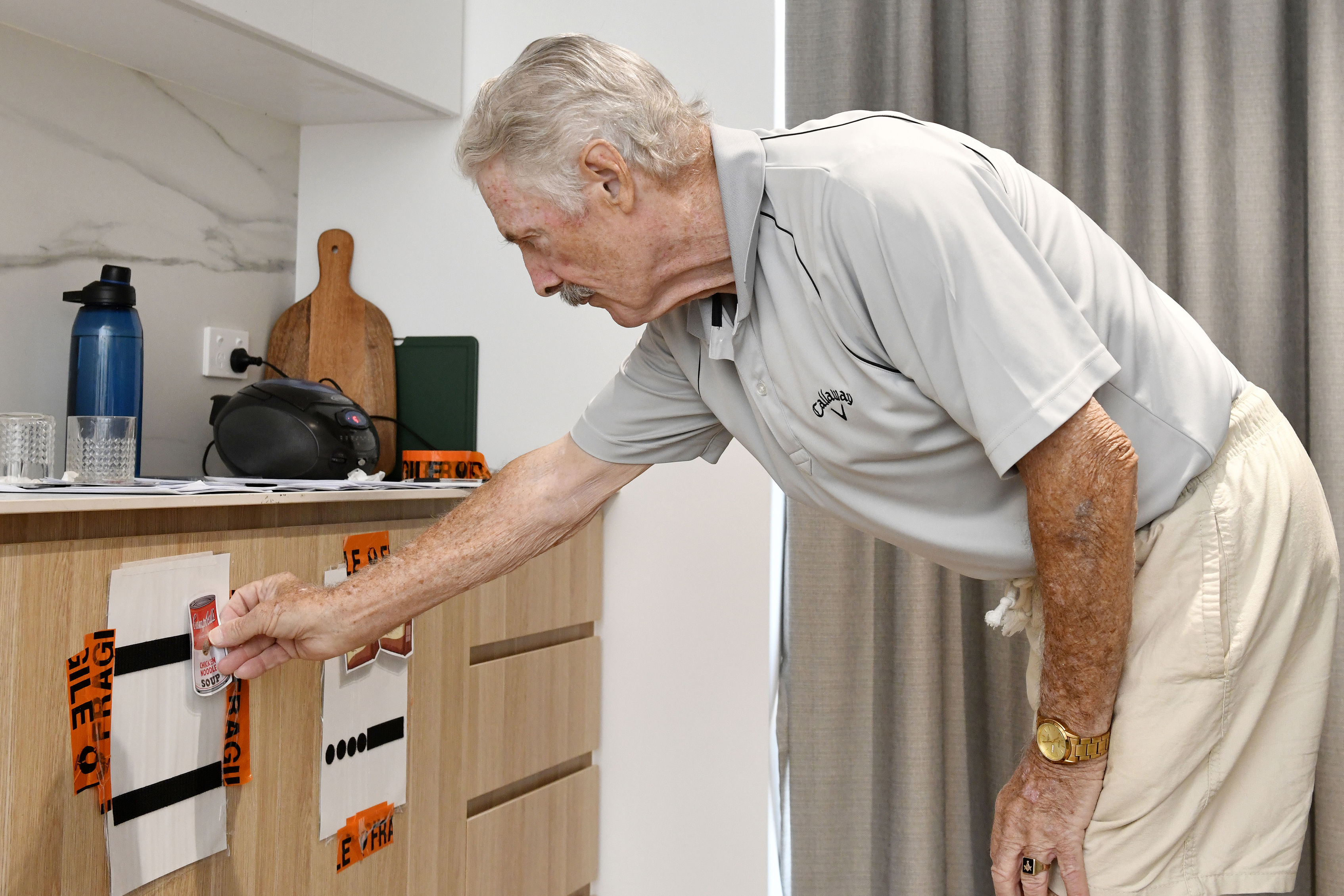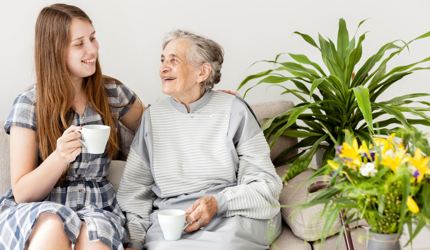
The consequences of having a fall can be serious. Even if a fall is not fatal, the injuries sustained can lead to long hospital stays, ongoing health problems, and physical and mental decline. That’s why falls prevention is such a priority.
In our last article, we looked at some of the risks that make falls more likely. In this article, we’ll look at how to minimise your risk of having a fall.
Staying on your feet
Let’s start with the very things we stand on, our feet. Brightwater Podiatrist Christian Deves said having problems with your feet or footwear can make a fall more likely and should not be ignored.
“Any generalised or localised pain on the feet needs attention,” he said. “That could be ingrown nails, uncut nails, skin lesions, a wound, calluses, or even corns that become uncomfortable for the person.
“If, as a result of that pain or discomfort, they change how they walk—compensating for the pain by putting pressure on the other foot or a different part of their feet, for example—or their balance, it can lead to a fall.”
Christian said podiatrists specialise in identifying and treating problems in people’s lower limbs, and a regular visit to a podiatrist can fix problems like callouses, corns, and ingrown nails. He said podiatrists will also provide advice on appropriate footwear that can help stabilise a person’s walking.
Illness can also exacerbate the likelihood of a fall.
“For example, people who have diabetes can typically lose sensation in their feet,” he said.
“People do tend to lose confidence in the way that they walk because they can’t actually physically feel the ground as much. Over time it can affect the control of the muscles as well, so that’s when we work with the physiotherapist to help prevent someone from falling by making sure that they maintain the strength of the muscles, so they’re a little bit more confident every time they take another step.”
Being alert and alarmed
Brightwater Senior Occupational Therapist Suzanne Kerr works with clients who are at risk of a fall. She said one of the first things she recommends people do is get a pendant alarm with fall detector.
“Hopefully, we can get to people before they have a fall, but a pendant alarm is a way of keeping them as safe as possible,” she said. “Then, in the event that they do have a fall, at least they have a way of contacting somebody or getting the emergency services.”
Suzanne said Brightwater’s occupational therapists also visit peoples’ homes to identify potential fall hazards in that environment and suggest/organise safer alternatives.
Common improvements that can help prevent a fall include:
- Installing ramps and rails at front doors
- Putting rails in bathrooms
- Removing steps into showers
- Replacing mats with non-slip mats
- Removing rugs
- Improving lighting (e.g. installing night sensor lights)
- Removing clutter.
“We also do a lot of retraining with the person in the house,” Suzanne said. “Whatever their daily routine is we try to use activities that strengthen the muscles that help them do those activities. If it’s about balance, for example, we would perhaps be doing kitchen tasks using balance, reaching and leaning.”
Use it or lose it!
Brightwater Physiotherapist Claire Myhill said one of the most important things people can do to prevent falls is exercise to improve their balance and muscle strength.
“The value of appropriate exercise to prevent falls has been proven by clinical research over many years” she said. “If you do all the exercises, you’re going to see a marked difference in six to 10 weeks. Research shows you need to do individually prescribed exercises that challenge your balance and improve muscle strength.”
Some common exercises to prevent falls include:
- Sit-to-stand exercises: Sit in a stable chair with your feet flat on the ground (with a sturdy surface in front of you, in case you need it), lean forward, stand upright, then slowly sit back down. You should aim to do this 10 times.
- Balance exercises: These build in difficulty. With the kitchen bench in front of you for safety, stand with your feet shoulder width apart and eyes open, and aim to stand for 30 seconds without swaying. Once you can do that, move your feet together, and do the same. Then try it with one foot in front of the other.
Aim for 10 repetitions of each. - Walking: This simple exercise is great for improving your mobility. If you have stairs, incorporate them into your routine. Start small and gradually build your strength and endurance.
It is optimal to have a Physiotherapy assessment and be given a specific, individualised exercise prescription and progression for guaranteed results and safety.
Brightwater has developed an award-winning specialist falls prevention exercise program called Instinct, which is designed to improve the quality of life for older people. It’s getting great results.
What is Instinct?:
- A 10-week multidisciplinary program
- Combines physiotherapy, occupational therapy, and social interaction
- Evidence-based exercises that mimic everyday tasks
- Weekly education sessions with various health professionals
- Remarkable improvements in balance and fall risk.
Instinct goes beyond traditional exercise programs. It integrates functional household tasks with proven physiotherapy techniques, helping participants build confidence in their daily activities.
“We called it Instinct because it’s helping you to do things you would instinctively do in your day to day that maybe you’ve stopped doing,” Claire said.
“People think they can’t do things but then after 10 weeks, they find they find they can do some activities again. Our society has a concept of ageing that as you get older you can’t do things anymore and that often isn’t correct. If you can’t do something we can look at retraining you to do it; or adjust the activity so you can do some of it and still get the enjoyment and satisfaction from doing what you love to do”
In our next article, we’ll look at what happens if you have a fall.



